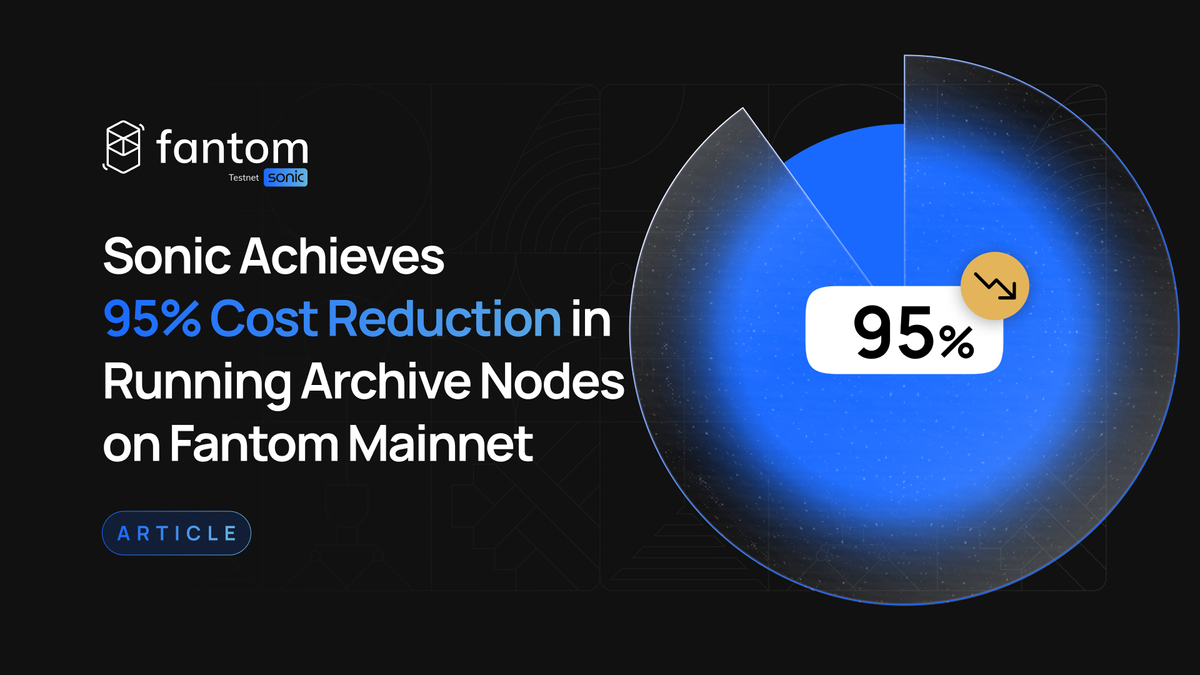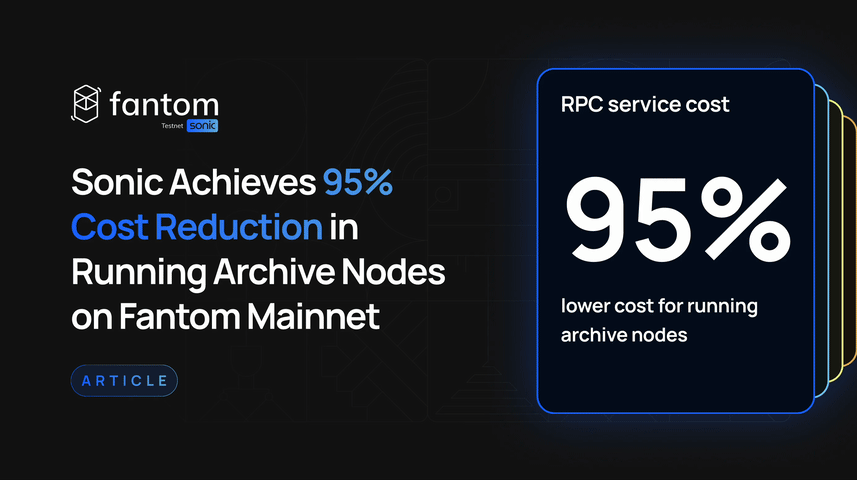Sonic Achieves 95% Cost Reduction in Running Archive Nodes on Fantom Mainnet

As we prepare to launch the Sonic mainnet in the coming weeks, we continue to put the tech stack through its testing paces and are thrilled to share some initial performance comparisons between the Sonic archive nodes and our existing Opera archive nodes.
On February 7, 2024, we upgraded some of the Foundation’s archive (RPC) nodes to Sonic on the current Fantom mainnet and saw a 95% reduction in costs for running large-scale archive nodes (a 20x improvement in cost efficiency). Click here for more information on archive nodes.
Sonic archive node performance results
To showcase the improvements that Sonic technology brings to archive nodes, we focused on three metrics: storage usage, synchronization time, and request capacity.
Storage usage
Sonic archive nodes use only one-third of the disk space than Opera nodes. In initial testing, we saw a 90% reduction in disk space usage utilizing a flat storage system but opted for a new variant of a Merkle Patricia Trie database that delivers additional speed, has inbuilt live pruning, is fully compatible with Fantom’s mainnet, and supports future developments including sharding/horizontal scaling.
Synchronization time
Sonic archive nodes synchronize data approximately 10x faster than Opera nodes on the Fantom mainnet. To put this advancement into perspective, it took 8 days for Sonic to sync from the beginning vs. 76 days for Opera.
Request capacity
Sonic archive nodes can handle approximately 9x more requests per second than the Opera nodes on similar hardware. The number of RPC requests processed per second on a 20-thread server setup was 10,224 for Sonic and 1,124 for Opera.

Combined, providers running RPC services can expect a 95% drop in costs (a 20x improvement in cost efficiency) with multiple archive nodes.
The next step in our Sonic mainnet testing is to launch a single Fantom mainnet validator running on Sonic technology, and we’re eager to share those results as well.
Frequently asked questions
The launch of Sonic comprises three main components that scale Fantom to new heights:
● A new virtual machine, the Fantom Virtual Machine (FVM), which increases our transaction throughput significantly while maintaining ultra-short finality.
● A new database storage, Carmen, which reduces storage requirements by up to 90%, providing greater cost efficiency for validators and accelerating the Foundation’s ability to deploy archive nodes from weeks to approximately 36 hours.
● An optimized Lachesis consensus mechanism, which brings a vastly improved transaction pool.
Fantom Sonic is in its testnet stage at the moment and will roll out as a mainnet to replace Fantom Opera in spring 2024. Currently, Sonic offers two different testnets: the closed testnet aims to showcase the maximum theoretical limits of Sonic, whereas the open testnet is interactive, allowing any user to experience Sonic directly.
Most importantly, this new virtual machine allows Fantom validators to execute smart contracts more efficiently.
The closed testnet is viewable only and aims to showcase the maximum theoretical limits of Sonic, whereas the open testnet is interactive, allowing any user to experience Sonic directly.
However, there may be even more significant performance gains with further testing that may require a hard fork in the future, but the current plan is not to hard fork Fantom Opera.



